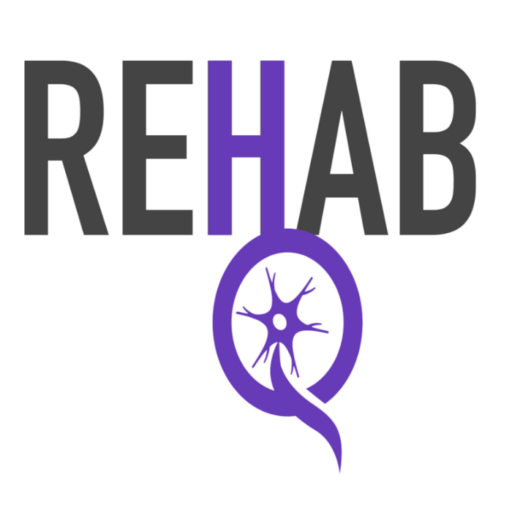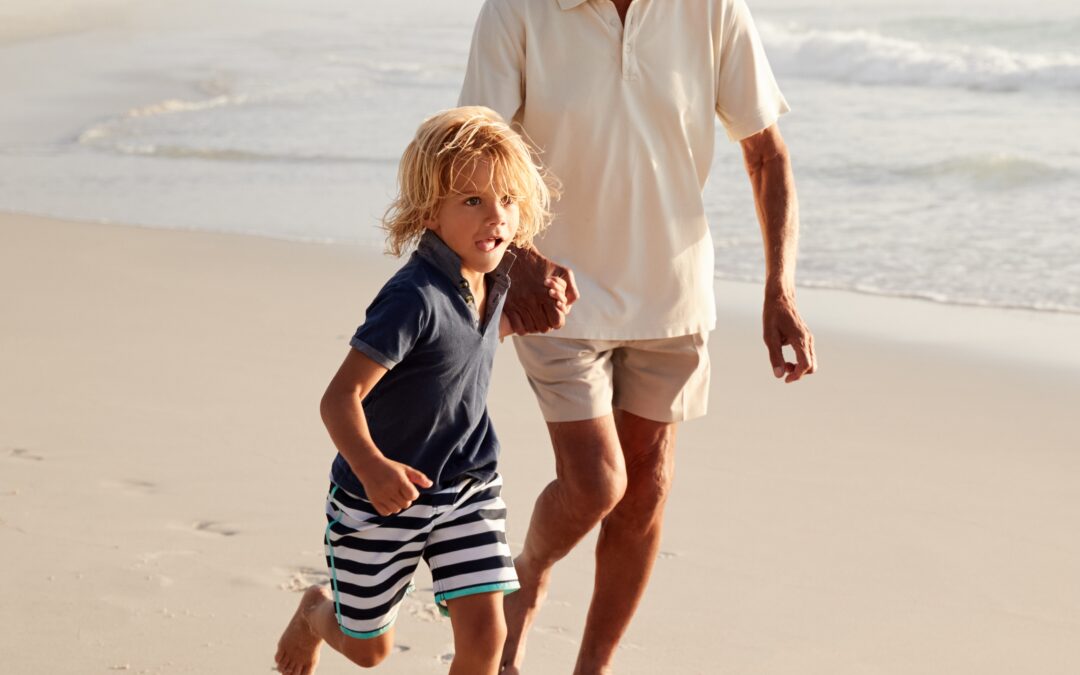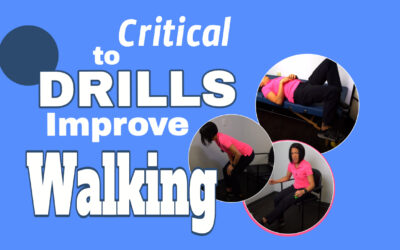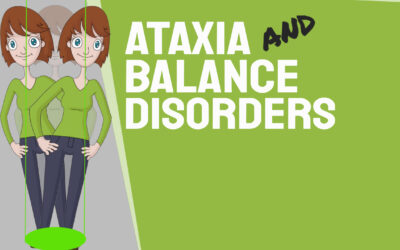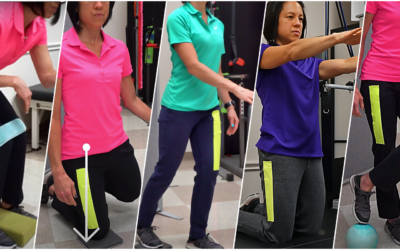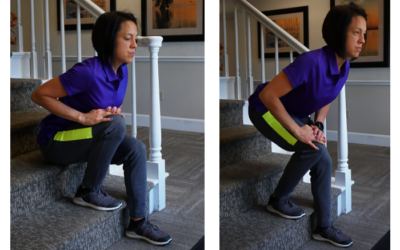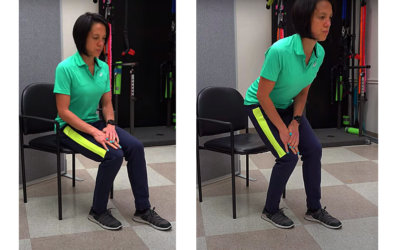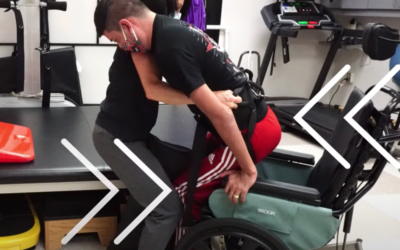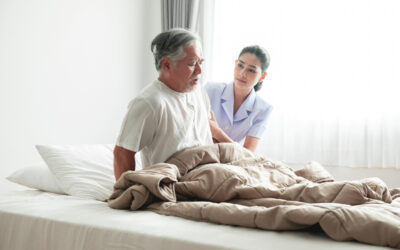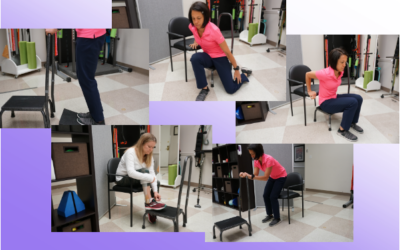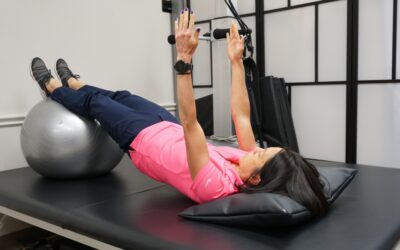How do you regain the ability to walk without fear of falling?
Fear of falling is a MAJOR concern for a lot of people. In the early stages of rehabilitation, the goal is to regain movement control at the hip, knee, and ankle. This is necessary to ensure that someone can support their body weight. Once you have established good movement control, you are ready to start adding additional challenges to standing and walking. It is not just enough to be able to support your body weight, It is also necessary to be able to move the “free leg” (leg in the air) in different directions. This is important for things like turning, stepping over obstacles, and walking in small spaces (where you might need to walk with your feet very close together).
All that being said, here is part two in a blog series on what I am calling “advanced walking exercises”. These exercises are critical in order to regain the ability to walk without fear of falling.
1. Kneeling Clam Shell
A kneeling clam shell is great to help isolate the hip muscles. More specifically the hip rotators. Again, a necessary skill in order to perform turn steps. For this exercise you are going to start in kneeling (on the involved leg) and rotate the opposite knee out to the side.
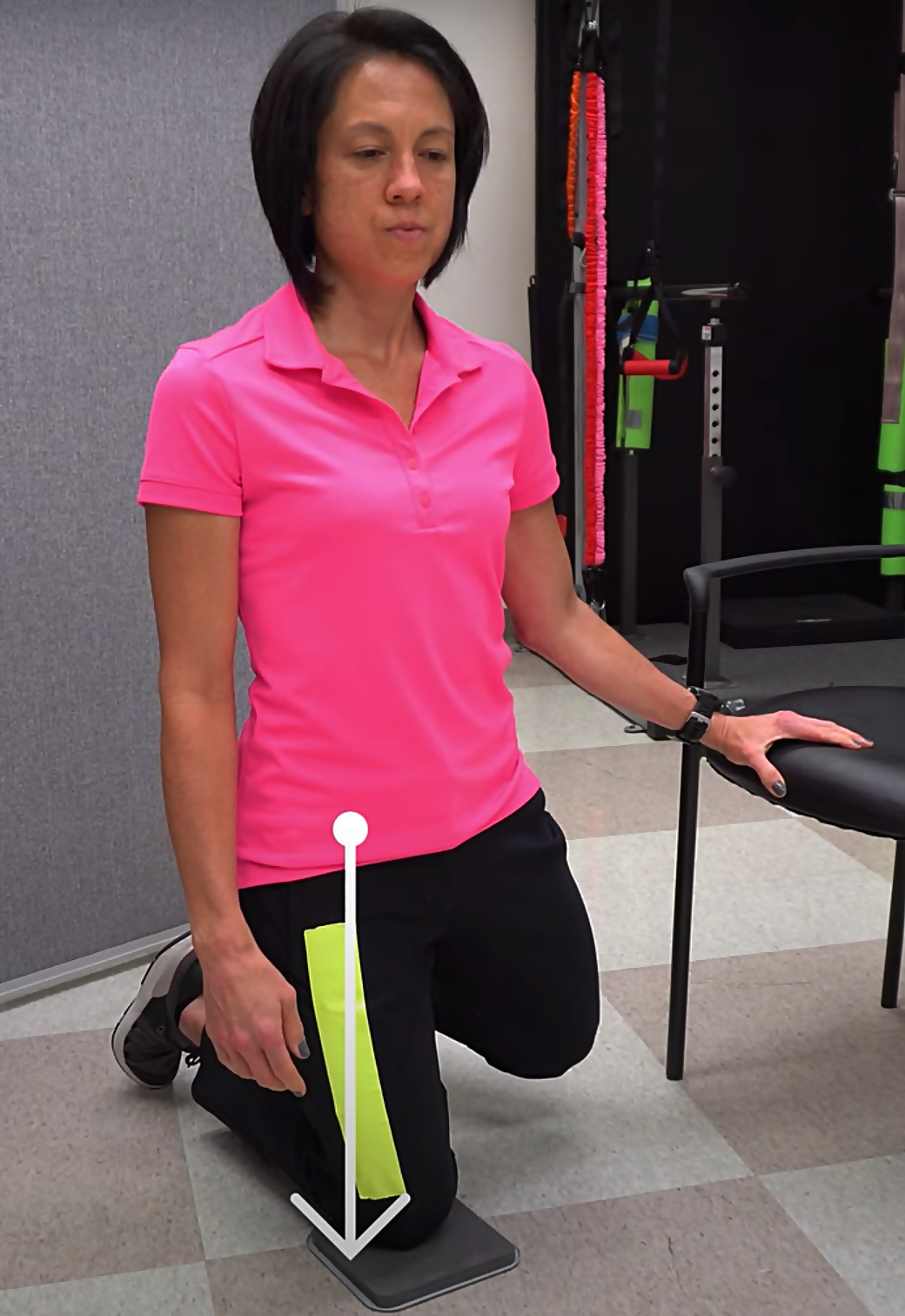
2. Kneeling to Half Kneeling
Kneeling to half kneeling repetitions will take the previous exercise just one step further. By bringing the leg all the way through, you are further challenging that involved hip. Make sure for this exercise that you “squeeze you bottom” in the involved leg and keep your chest pointing toward the ceiling.
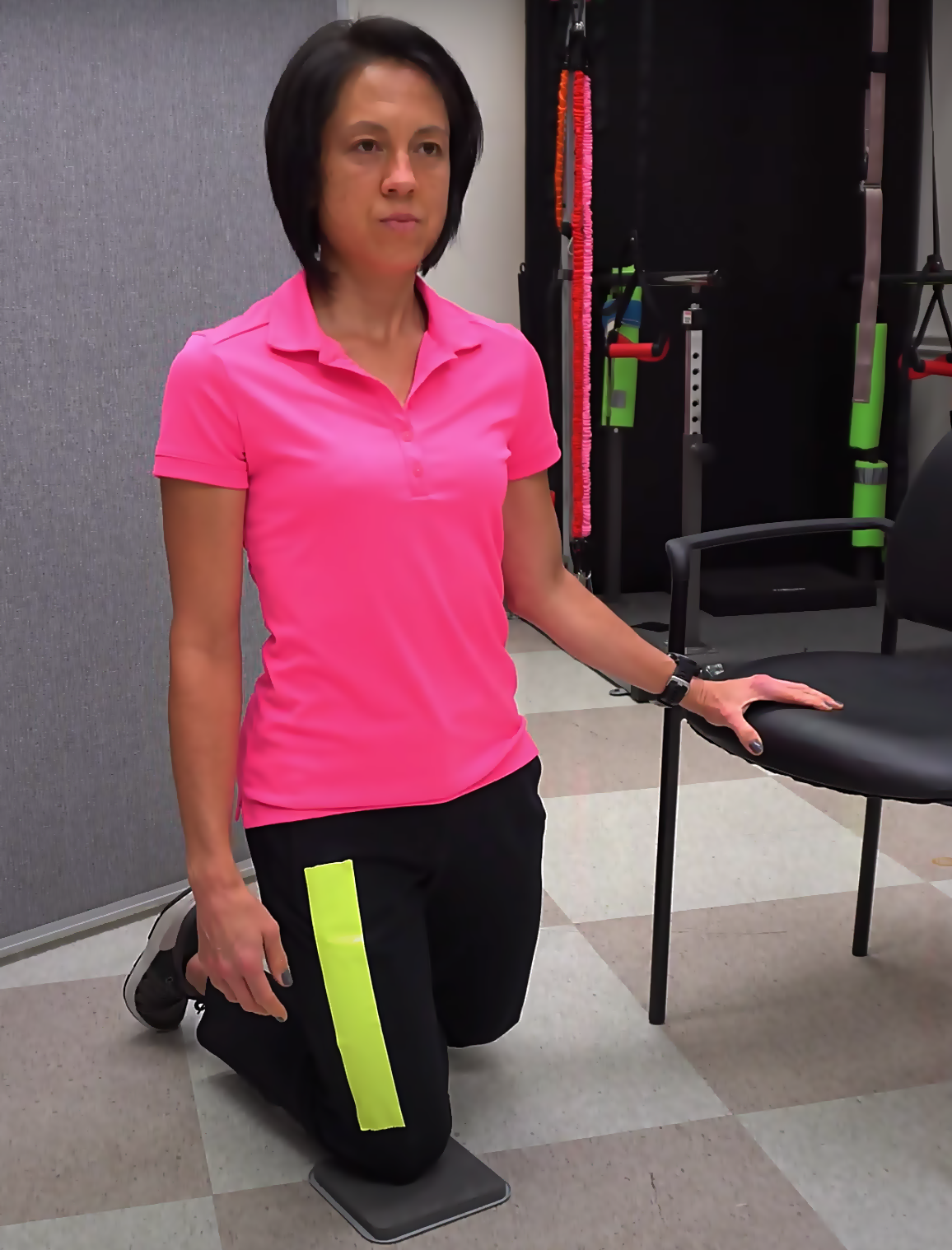
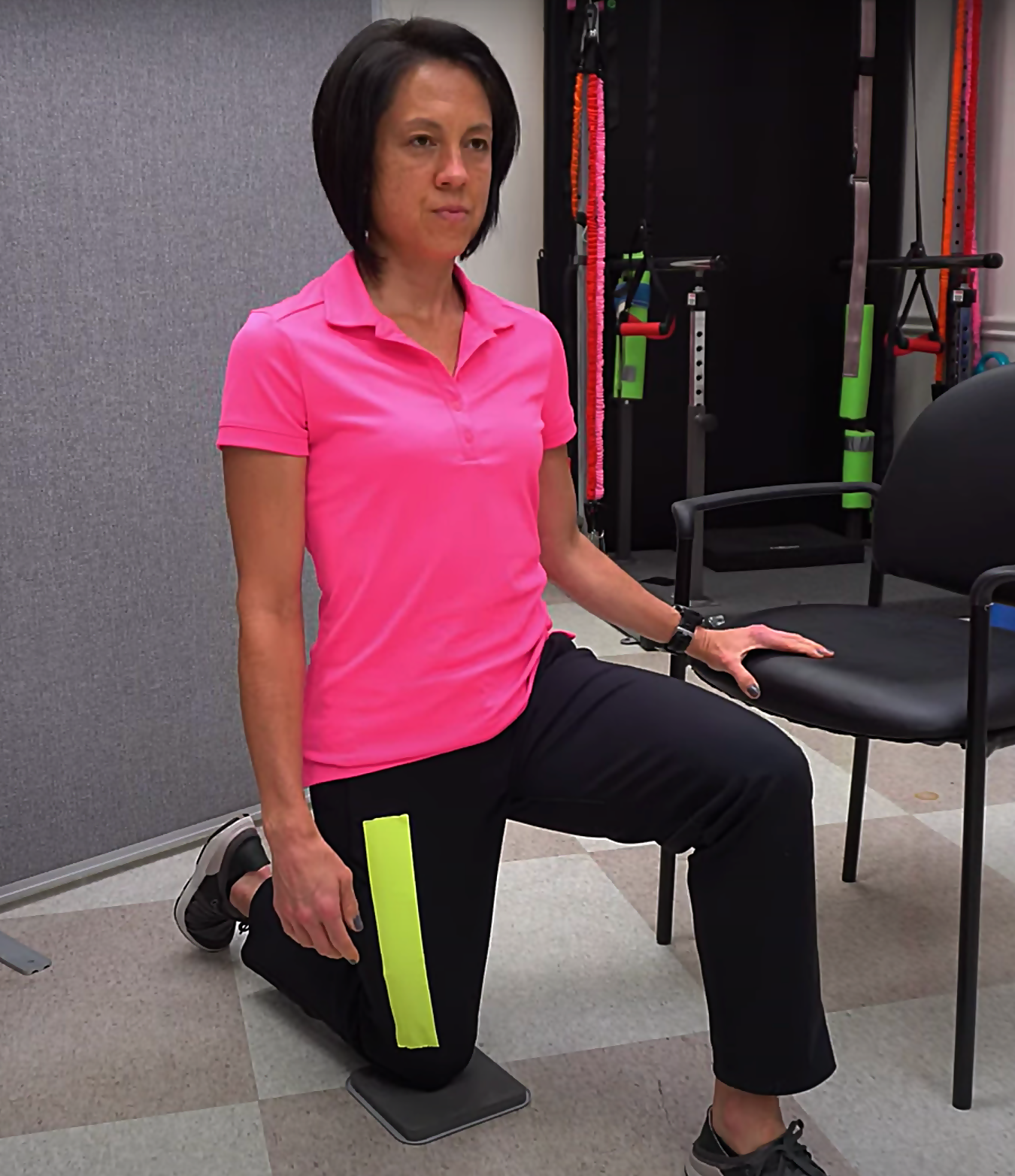
3. Kneeling with Karate Chop
Once you are able to maintain this half kneeling position without holding on, you can try this diagonal movement with the arms. This movement will help to start to disassociate the upper body and the lower body (allow upper body and lower body to move independent of each other). This is an important component of being able to walk with a natural trunk rotation.
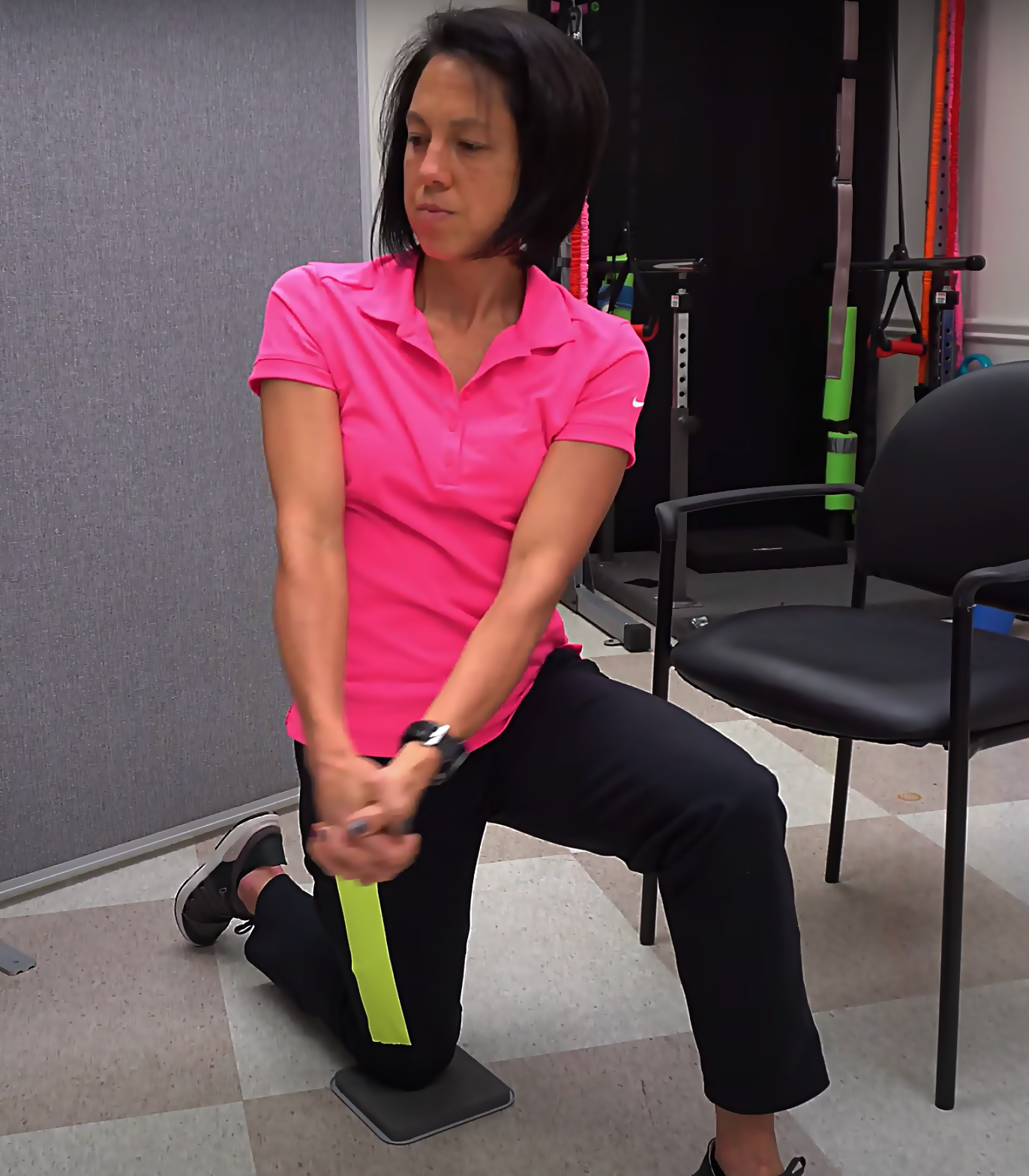
4. Standing Balance with Medicine Ball (rolling forward and backward)
Rolling a medicine ball forward and backward adds an additional challenge and will really require much more control in the involved leg compared to a simple toe tap. Hold on for safety.
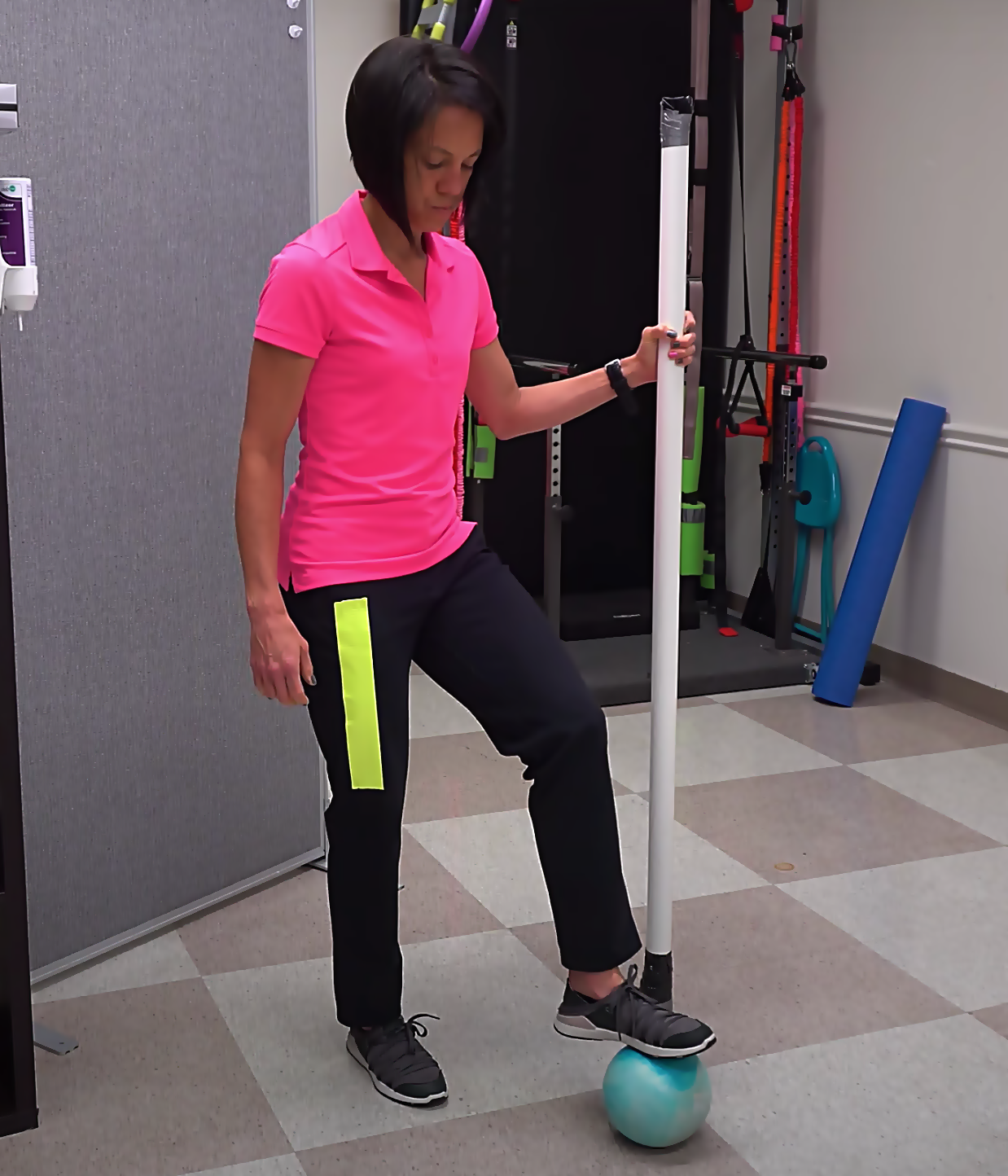
Once you are able to roll the ball forward and backward, you can add a half moon pattern. This will require you to cross midline. This requires more hip control. Crossing midline is also a skill that is sometimes difficult after a stroke or a brain injury. Therefore, it is good to incorporate this type of activity as much as possible.
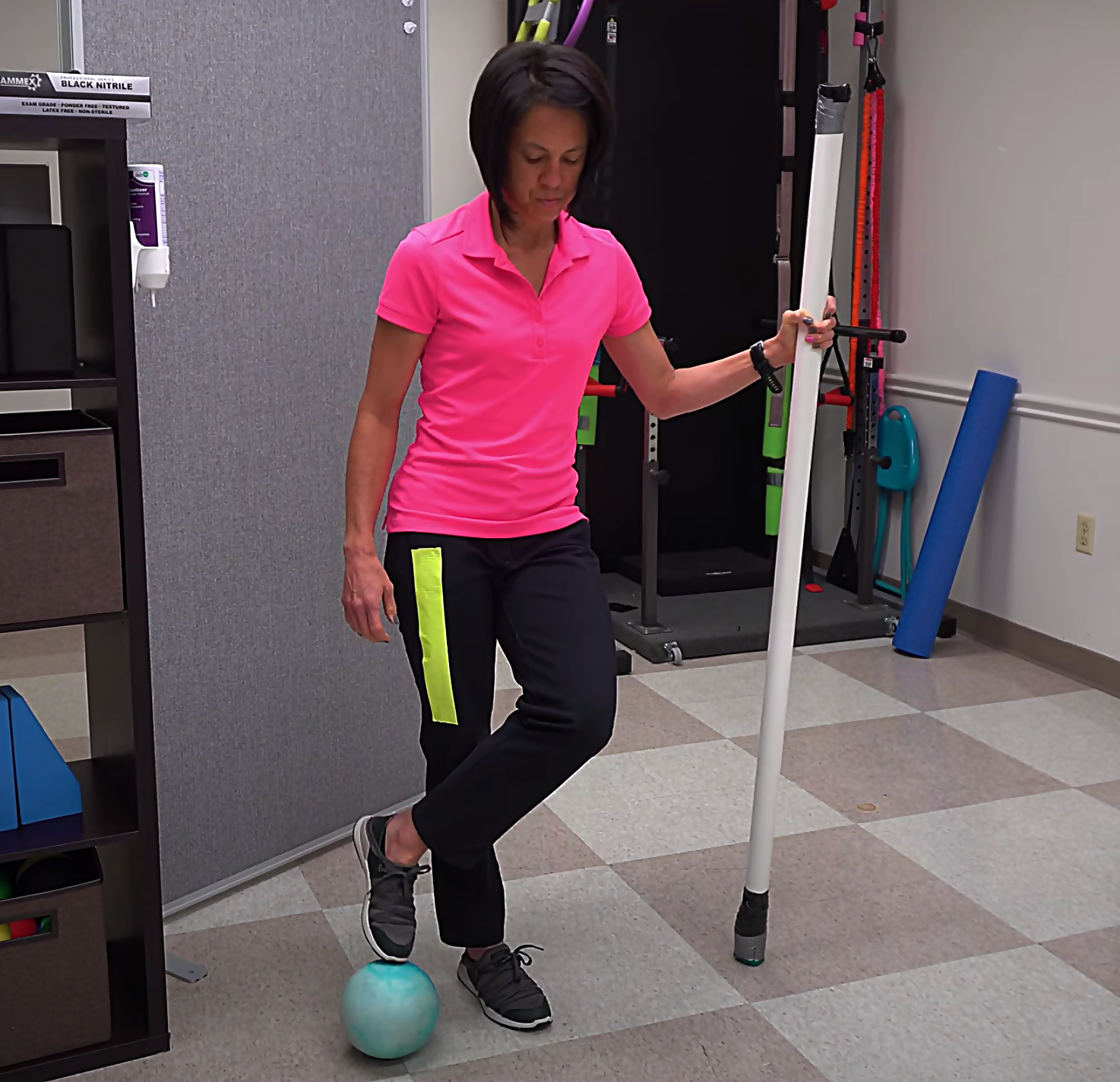
5. Standing Balance with Stacking Cones
Toe taps on these cones will help to work on the accuracy of your foot placement.
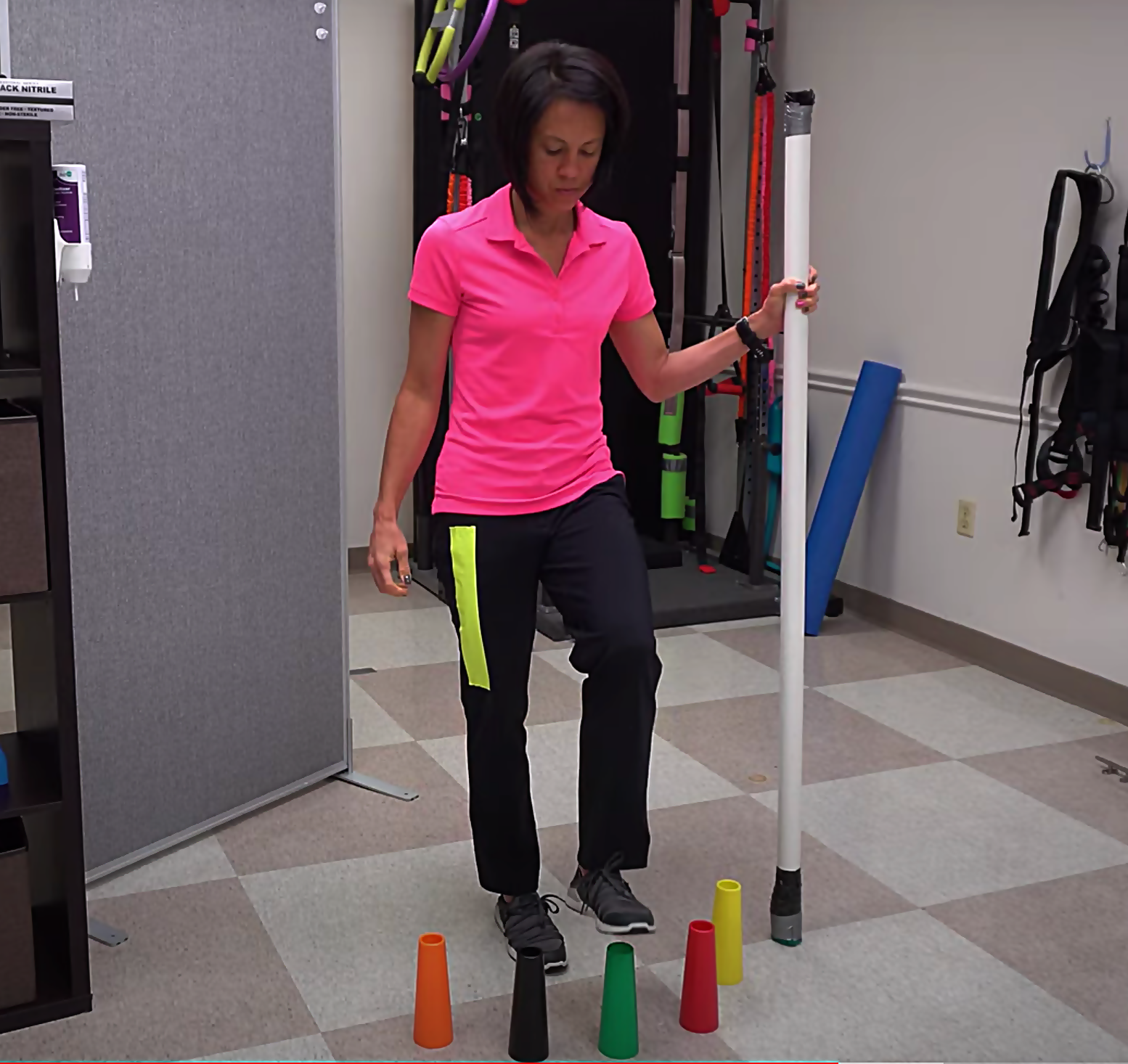
Again, place cones on the outside of the involved leg and work on crossing midline.
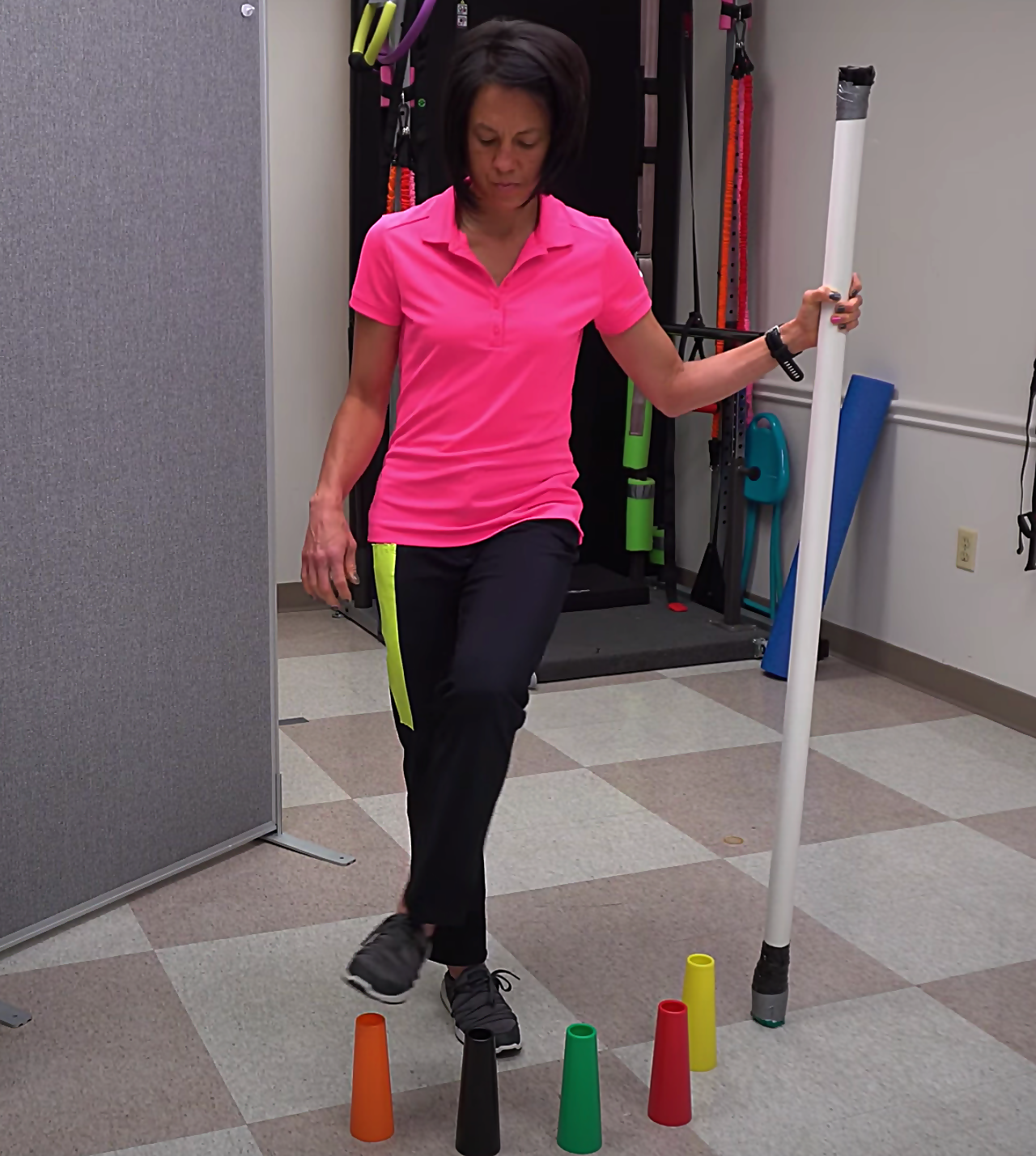
Video with this complete series:
More Articles You Might Be Interested In:
Walking Exercises for Stroke Patients
Many people inquire about the "best exercises" for stroke patients to improve walking. I like to use the term "Drills" when referring to "stroke exercises". Why? Because "Drills" are what I think of when I think of repetitive movement. Case and point, drills are...
Balance Training for Ataxia
Balance training is a critical component for anyone with ataxia. This is due to the fact that ataxia negatively impacts the balance system and is one of the leading causes of disability. Ataxia is caused by damage to the cerebellum. The cerebellum plays a MAJOR role...
Relearn to walk: Progression (with videos)
Are you super eager to relearn to walk? Walking is a HUGE goal for anyone who has lost that ability. Walking means different things to different people. And quite honestly, has far less meaning until you have lost this fundamental skill. All that being said, it is...
Regain Normal Walking After a Stroke: Advanced
A common goal after a stroke or a brain injury is to regain "normal walking". However, this goal is not limited to just those who have suffered a stroke. I dare say it is the number one goal of almost everyone who has suffered an injury to their neurologic system. ...
Stand and Walk After a Stroke: Intermediate Progression
Many want to stand and walk after a stroke. Of course, this is critical in giving someone more independence. However, standing and walking is also important to prevent deconditioning, maintain joint health, and prevent postural abnormalities associated with prolonged...
Caregiver Training: Helping someone stand
Standing is one of the most critical skills to relearn after any type of neurologic injury. Standing helps with digestion, bone health, and joint health. It can also reduce spasticity, and facilitate motor recovery. The caregiver role is almost more important than...
Walking After Stroke (Early Stage)
Walking after a stroke is important to a ton of stroke survivors. A stroke causes hemiplegia (weakness on one side of the body which can make standing and walking difficult. With this in mind, I get a ton of questions from stroke survivors and their...
Product Spotlight: A step stool with handle
A step stool with a handle is one of the most seems like an odd piece of "rehab equipment", however, it is truly "worth its weight in gold". It is probably the one itemI can honestly say I use multiple times a day in my clinic. And, rarely as an actual step stool....
Gym Ball Exercise Routine for Better Balance
A Gym ball exercise routine is a great way to improve your balance. If provided with the correct exercises, they can challenge almost every "problem area" for a stroke survivor. The main areas that are problematic after a stroke are steadiness, symmetry, and dynamic...
Spastic ankle guide to stretching
Stretching a spastic ankle is critical to improve standing and walking. However, stretching a spastic ankle can also be extremely challenging. Add to that, NOT stretching a spastic ankle and you are at risk for making it worse. Ugh..... All that being said, never...
